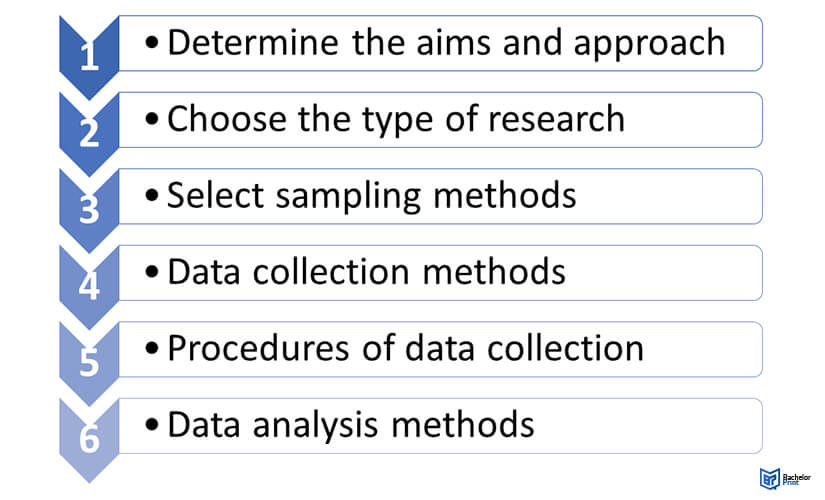
Research is the creative and systematic work done to increase knowledge on a particular topic or phenomenon. It involves multiple steps such as defining a research question, conducting a literature review, collecting data, analysing results, and drawing conclusions to contribute to the existing body of knowledge. This post discusses the entire research process and everything you should know about it.
Definition: Research process
This process involves the steps of conducting research work to get effective or desired results from your project. It entails selecting the topic, conducting problem research, developing a research design, and establishing a proposal.
- ✓ Free express delivery
- ✓ Individual embossing
- ✓ Selection of high-quality bindings
Step 1 of the research process: Choosing a topic
Choosing a topic for your research is not as easy as you may assume, especially if you have not done it before. For instance, you must become well-versed in the material surrounding the topic, the possible research topics, and if there is room for more knowledge. Furthermore, choosing a topic for your research process may take a while and involve the methods below.
Brainstorming ideas
You can come up with a research topic by brainstorming ideas. For instance, you can find a field of interest or classes where you want to choose your idea. However, you may have already thought of a topic, like when applying to graduate school. However, even with an existing topic idea, you still need to write a statement of purpose. The purpose of brainstorming ideas is to choose a specific topic.
Familiarize yourself with your topic
Once you have landed on the topic you want to write about; the next step is to familiarise yourself with it. You can get a good sense of the chosen topic by reviewing existing literature. While reading about the topic, taking notes, and identifying problem areas, debates, and questions would be wise. This helps you find a specific niche for your research.
Considering the practicalities
The next part of choosing a topic is considering the practicalities. For instance, you should consider the factors below:
- The requirements of your program
- The time you have to conduct the research and submit your report
- The resources you will need to research the particular topic

Step 2 of the research process: Identify a problem
Consider the following elements when identifying a research problem.
Theoretical and practical problems
A well-identified research problem will help the researcher accomplish all the vital phases of the research process, like selecting objectives and research methodology and making your project manageable. There are two types of problems in research: practical and theoretical.
Practical research focuses on processes that are not working properly. Examples of practical research problems are:
- Performance/ productivity issues in an organisation
- Processes that need improvement in an institution
- Areas of concern in a field
On the other hand, theoretical research is associated with unexplored phenomena. For example:
- A context that has not been studied closely (like long-term effects of radiation from Wi-Fi)
- A contradiction between various perspectives (like the difference between racism and colorism)
- A correlation that is not well-understood (like the link between Vitamin D deficiency and cardiovascular health)
Writing a problem statement
A problem statement is a precise description of the issues your research project will address. It is crucial for finding and implementing effective solutions in a research project. Additionally, a problem statement helps you contextualize and understand the implication of your research problem. An effective problem statement should:
- Put the problem in context
- Describe the precise problem
- Show the relevance of the problem
- Set objectives
Step 3 of the research process: Research question
A research question aims to help you get perspectives on what you should focus on when conducting research for your project.
A strong research question should be, focused, researchable, feasible, specific, complex, and relevant. Other types of research require a conceptual framework and testable hypotheses before coming up with research questions.
Step 4 of the research process: Research design
A research design is an approach for answering your research questions using empirical data. A research design aims to ensure that our methods match your project’s aims. It also ensures that you use the right methods for data analysis. Creating a research design entails the following steps:

When creating a research design, you must consider primary or secondary data and qualitative or quantitative methods. Your choice will influence your entire research design.
Step 5 of the research process: Research proposal
Finally, you must write a research proposal through which you present your objectives, content, and plan. The proposal will demonstrate the relevance of your study and should include a problem statement, research objectives, questions, and methodology.
Additionally, your research proposal needs a literature review section that shows that you have researched and understood your topic. It also shows that you are not repeating what others have said or done.
You must present the research proposal to your professor or instructor for approval before conducting the study.
in Your Thesis
Overview of all research process articles
FAQs
The five stages are choosing a topic, identifying a problem, formulating a research process, creating a research design, and writing a research proposal.
There are many methods for choosing a topic for your research process. The best ones are brainstorming ideas, familiarising yourself with your topic, and considering the practicalities of your options.
The difference is that you can choose a topic in a general area while identifying a problem helps you focus your research on a specific subject in your topic.
The research process helps you get effective results from your project. It also helps you design your project.
